We’ve known for a while that the historic center of San Miguel de Allende is a UNESCO World Heritage Site.
But we only recently found out that the Santuario de Jesús Nazareno de Atotonilco (Sanctuary of Atotonilco)—located 12 km northwest of town—also falls under that designation.
UNESCO sites differ so widely, it’s hard to tell sometimes what we’re in for. It could be a life-altering experience, or it could be another well-maintained 400-year-old church, of which Mexico is certainly in no short supply.
In the end, we were glad we made the effort to visit. We only wish we could have folded a visit to the nearby Pueblo Magico of Dolores Hidalgo into our day as well.
Here’s why we think the Santuary of Atotonilco is worth a look, plus what you might expect from your own visit and tips for planning a trip.
Planning a Visit to Atotonilco?
Here are our top tour recommendations for visiting:
✪ From San Miguel Private driving tour of the city’s top sites (including Atotonilco)
✪ From Guanajuato San Miguel & Dolores Hidalgo group tour (includes a stop at Atotonilco)
This post contains affiliate links. If you click and make a purchase, we might receive a commission (at no added cost to you). Thanks for supporting independent, ad-free blogs!
Why Visit
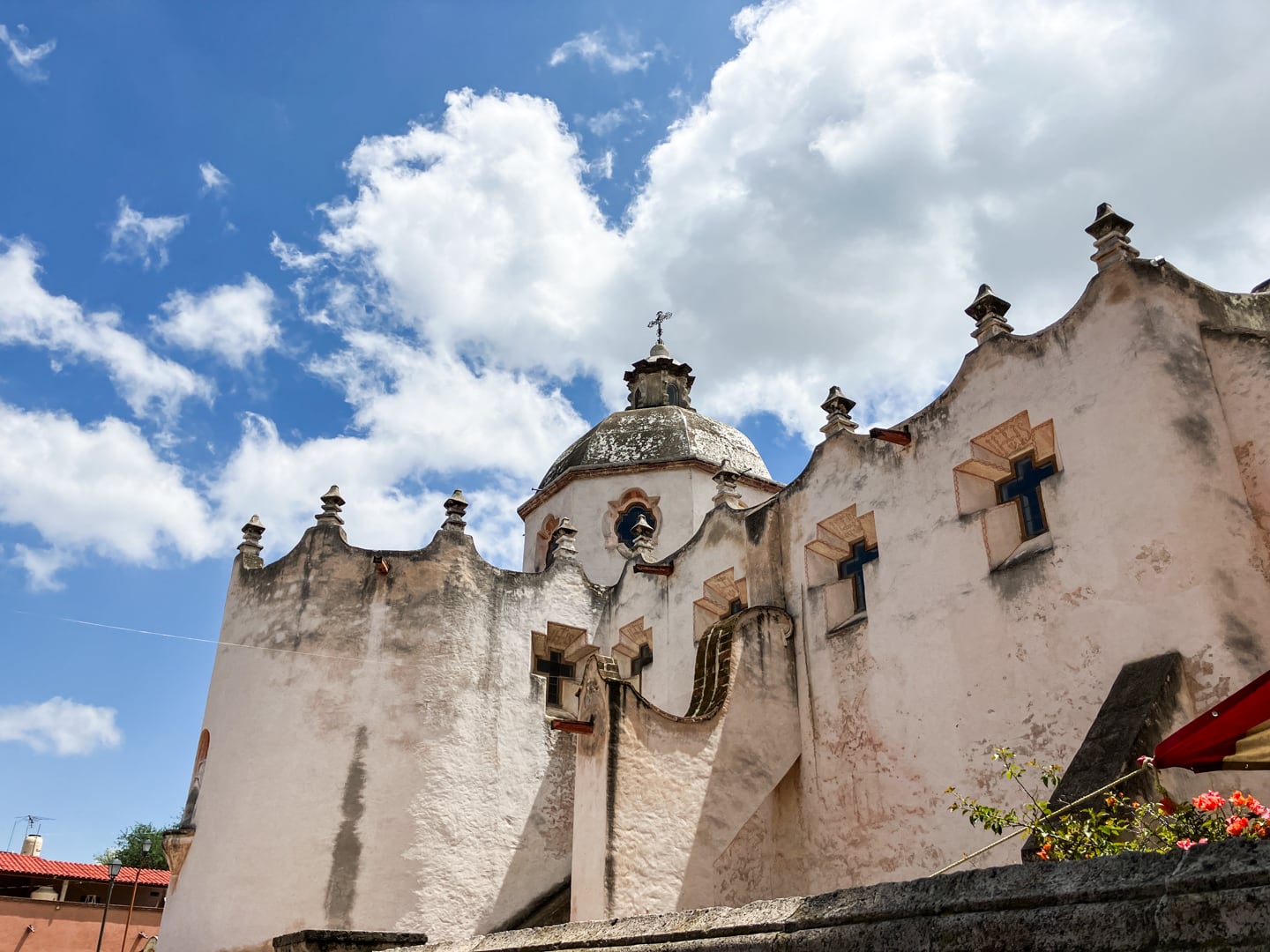
It’s not difficult to justify a visit to San Miguel de Allende, which is widely considered to be one of the best cities in Mexico to visit based on a number of reputable travel magazines.
But we’d wager that most travelers to the area haven’t heard of the Sanctuary of Atotonilco. Here’s why we think it’s worth a visit.
UNESCO World Heritage Site
If you’ve read anything about the Sanctuary of Atotonilco, you will have undoubtedly heard at least one author call it the “Sistine Chapel of Mexico.” Its intricately-painted interior is jam-packed with murals, frescoes, and baroque religious art, which is a huge part of why it was folded into the same UNESCO designation as San Miguel de Allende.
Murals-Galore
Multiple rooms of the church are filled with detailed artwork created in the 18th century by self-taught artist Miguel Antonio Martínez de Pocasangre. His murals cover nearly every inch of the walls and ceiling with scenes depicting Biblical stories of devotion, sacrifice, and redemption.
Spiritual & Historical Significance
It’s important to note that the Sanctuary of Atotonilco isn’t just a museum, but a popular place of pilgrimage and worship, and certain times of year can get very busy in that respect. The church also played a key role in Mexico’s independence movement. Father Miguel Hidalgo, who led the first cry (grita) for independence, took a banner from the church to battle with him in 1810.
Easy Day Trip
It’s fairly easy to visit the site from San Miguel de Allende, as its a relatively straight shot out of town and 12 km up the highway (more about that later). Many visitors also like to combine a stop at the church with a visit to Dolores Hidalgo up the road.
Getting to Santuario de Atotonilco
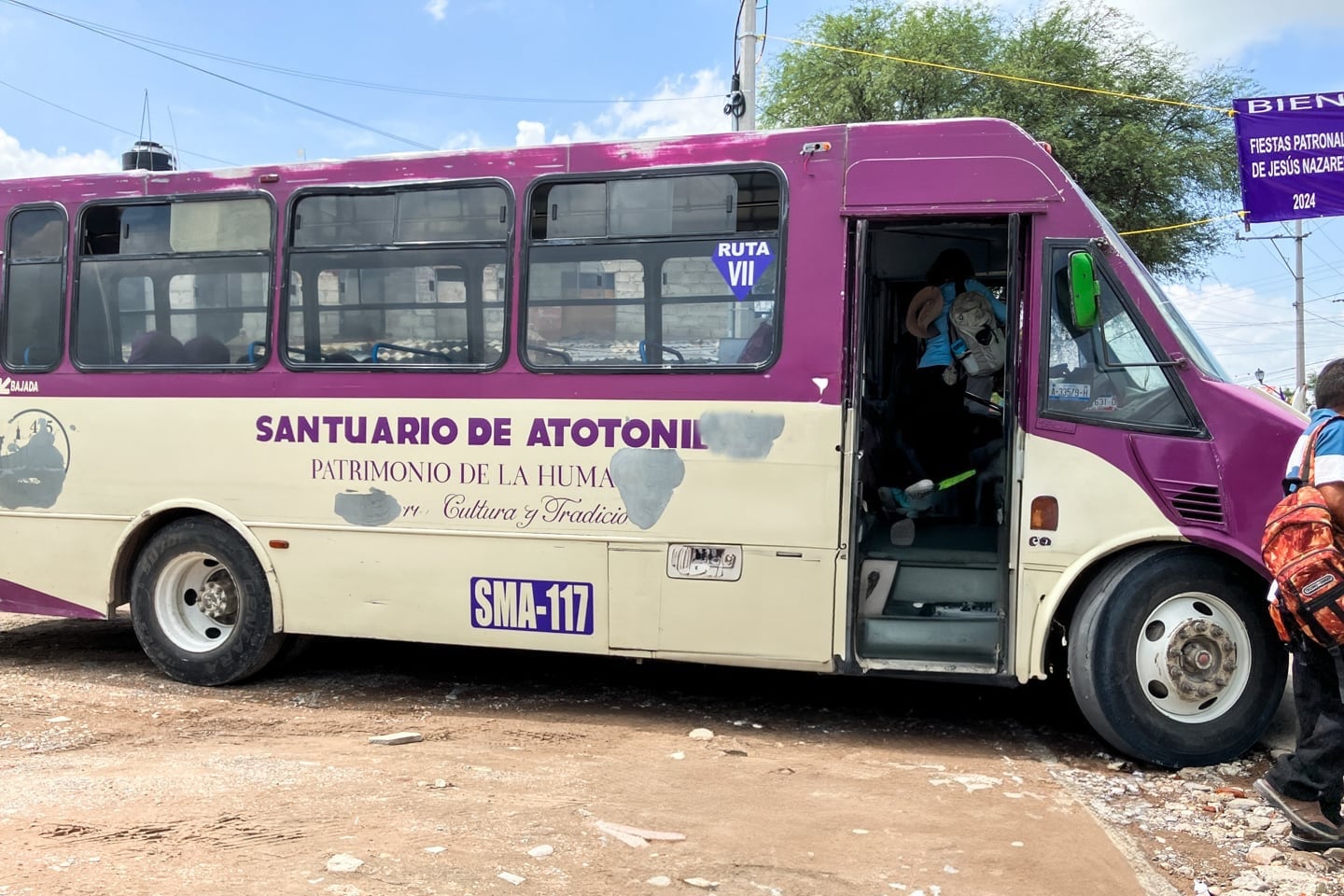
San Miguel to Atotonilco on Your Own
Getting to the Sanctuary of Atotonilco from central San Miguel de Allende is relatively straightforward. The hardest part is finding out where the buses leave from.
The bus stand is on the southwest corner of the intersection of Calzada de la Luz and Hidalgo, an area also known as “El Porton”. You can find it here on the map.
From there, keep an eye out for the buses that say “Atotonilco”. Many are clearly marked (like the one above). Buses come every 30 minutes or so and the journey took us about 30 minutes.
It’s a short walk from the bus stand in Atotonilco to the sanctuary (the town isn’t that big), and the church is easy to find, as all roads seem to lead there.
Recommended Tours
Hopping on a tour is a great idea, especially if you’re short on time, not a confident Spanish speaker, want to see more than just Atotonilco, or you simply do want to have to figure it all out on your own.
These are two tours that would be at the top of our list if we were considering visiting the sanctuary right now:
✪ From San Miguel Private driving tour of the city’s top sites (including Atotonilco)
✪ From Guanajuato San Miguel & Dolores Hidalgo group tour (includes a stop at Atotonilco)
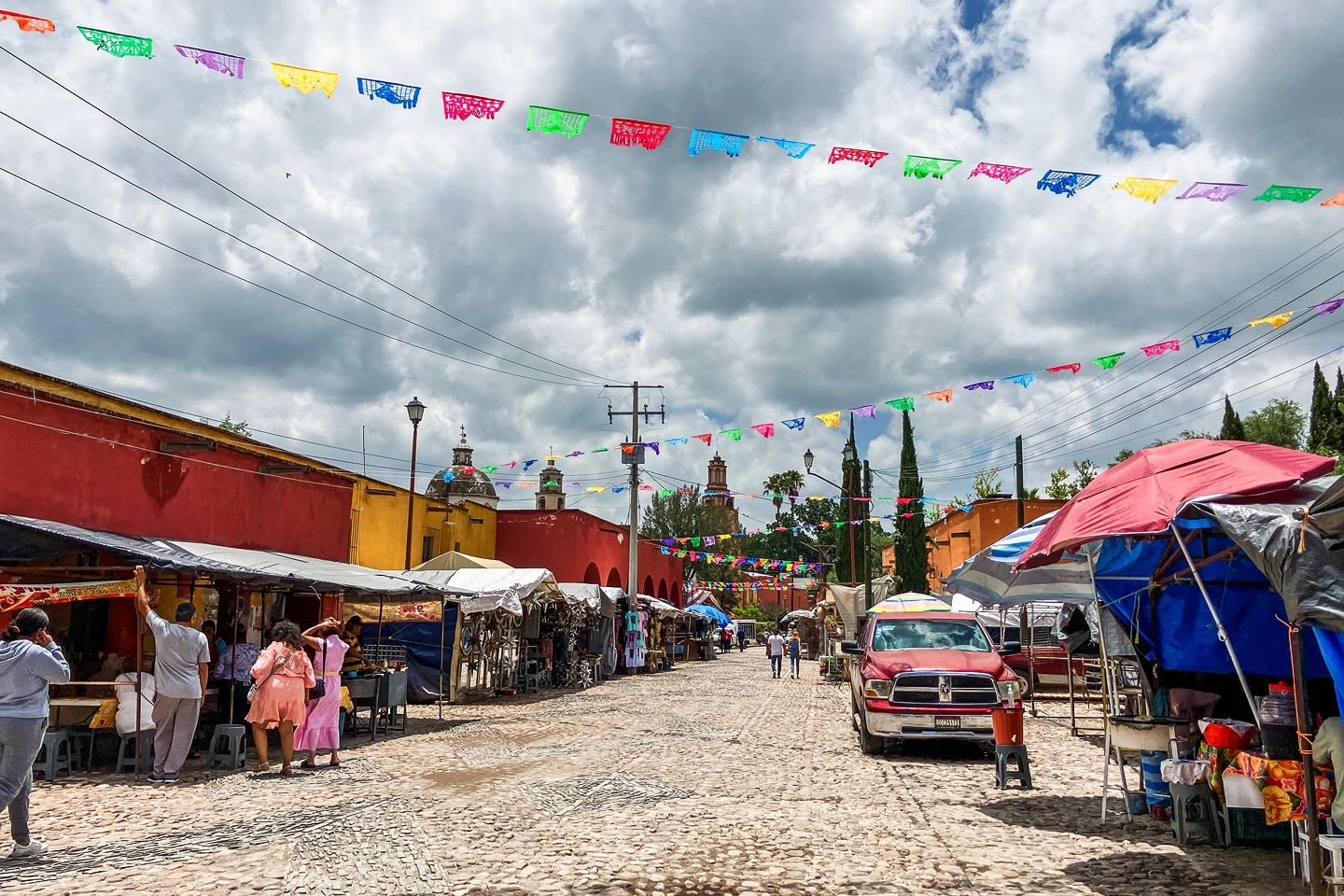
Costs & Visiting Hours
Sanctuary of Atotonilco visiting hours are 9am to 5pm daily, but this being Mexico, these aren’t set in stone.
Admission is by donation (which is strongly encouraged by staff members). We read beforehand that there was a separate area requiring an admission fee, but never saw it.
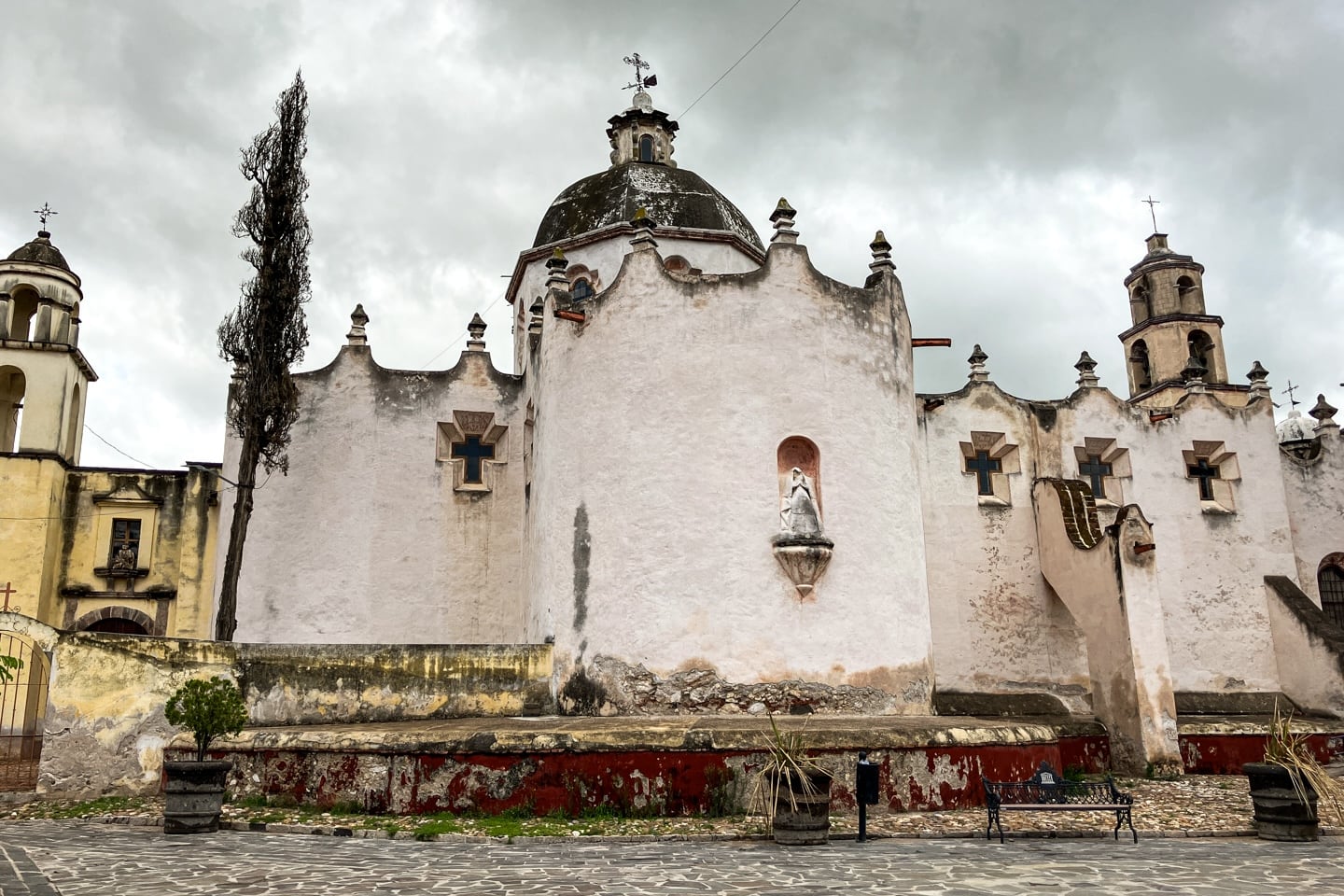
Touring the Sanctuary
Santuario de Atotonilco is by no means the grandest church we’ve visited in Mexico—far from it. But the murals make it one of the more striking so far.
One of the biggest surprises we learned after coming here, is that the Sanctuary of Atotonilco isn’t all that old—at least not by Mexico standards, and definitely not by San Miguel de Allende standards. The complex was mostly constructed in the latter part of the 18th century.
So why is it so significant? The complex has been called the “Sistine Chapel of Mexico”—and for good reason. Every square inch of ceiling of every nook and cranny in the sprawled out church is awash in colorful and elaborate murals painted by Antonio Martínez de Pocasangre over a thirty-year period.
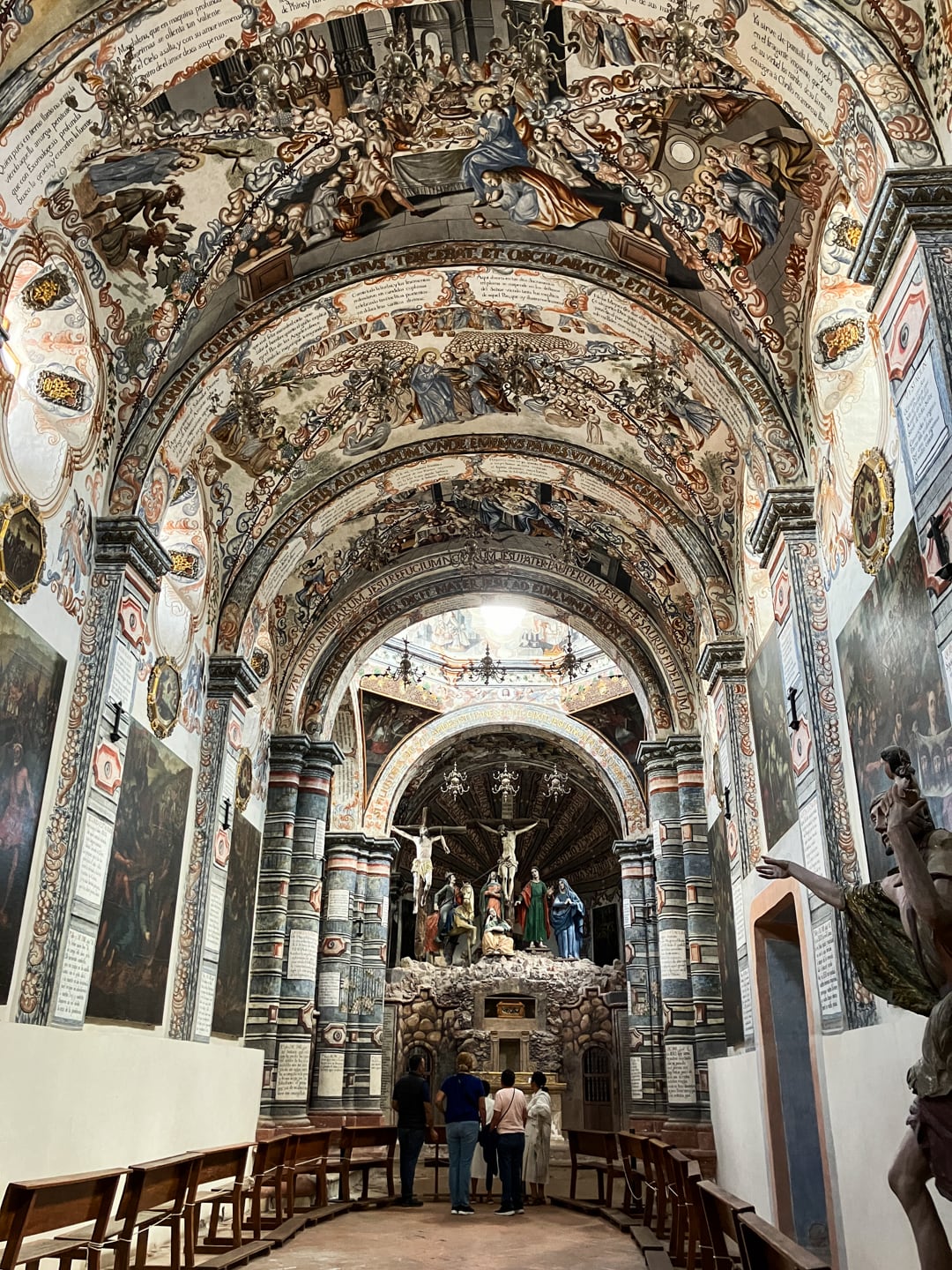
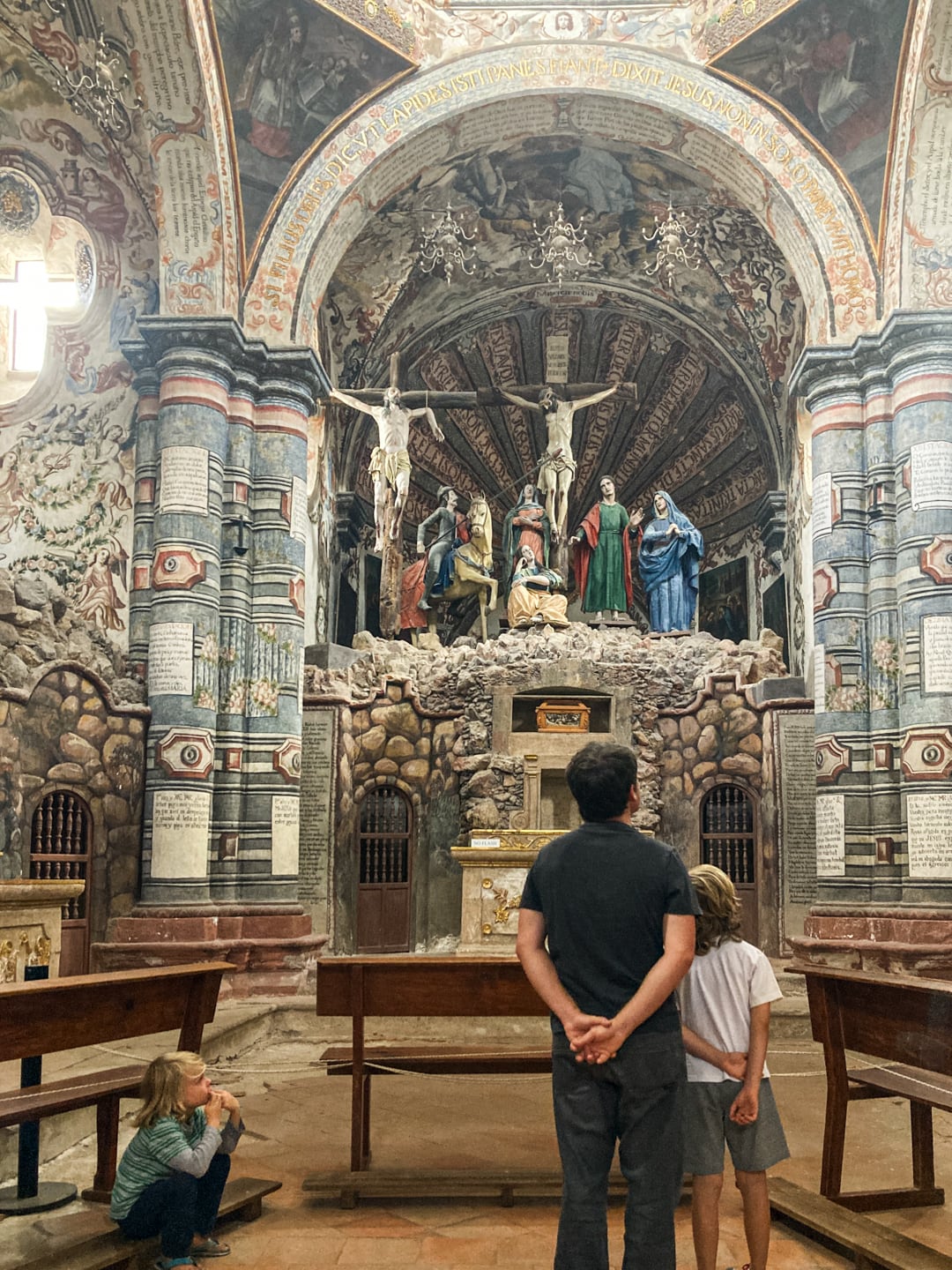
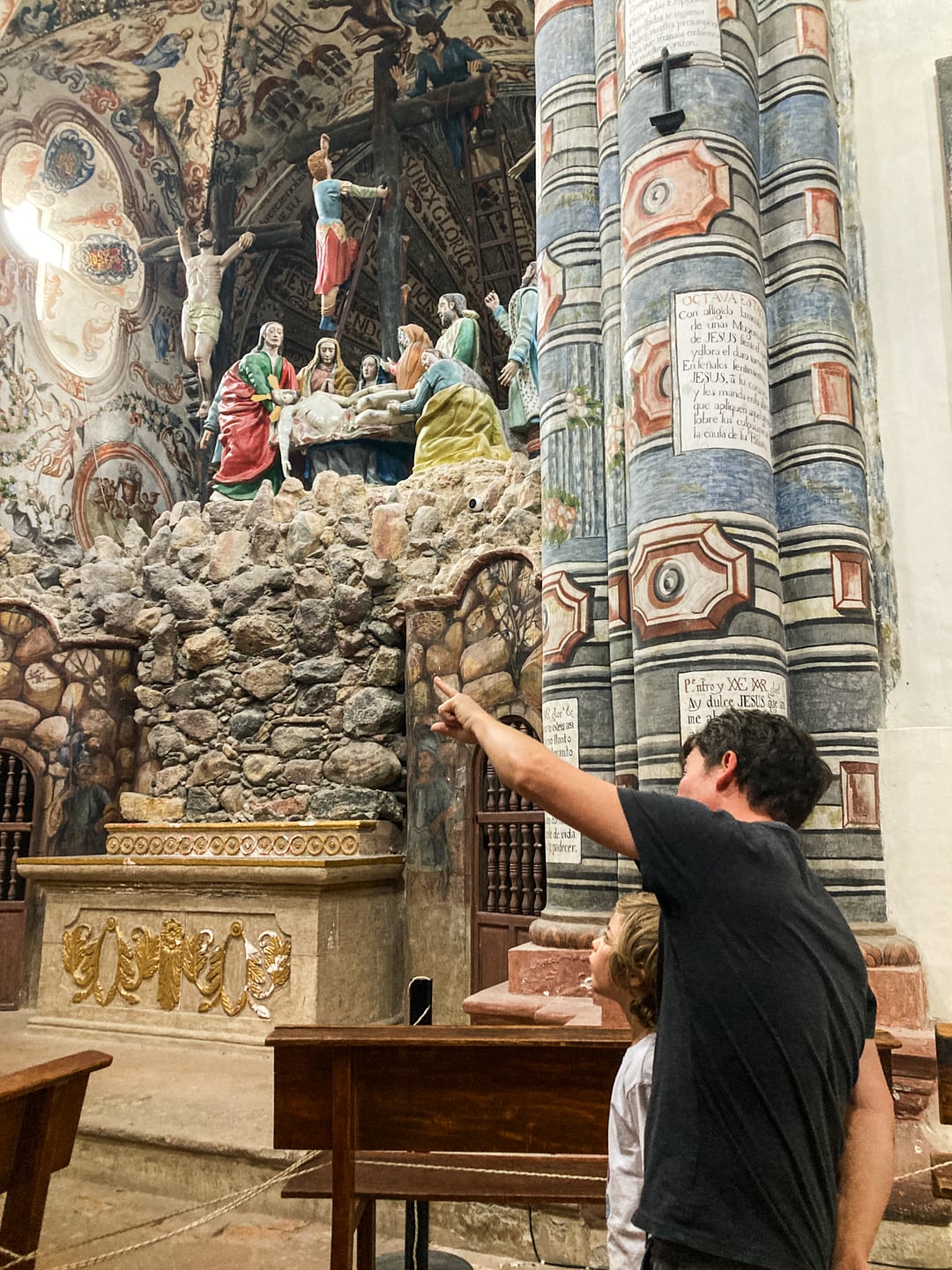
In addition to a popular heritage attraction, Santuario de Atotonilco is also a popular pilgrimage site, attracting as many as 5,000 visitors a week.
Fortunately, this particular Saturday, there’s only a handful of people visiting. But I can only imagine what the place must be like at capacity.

A lot of visitors like to tie a visit to Santuario de Atotonilco into a day trip from San Miguel de Allende to Dolores Hidalgo (40 minutes north of Atotonilco). We had other plans in SMA that day, so we decided seeing the church was a big enough outing for the morning.
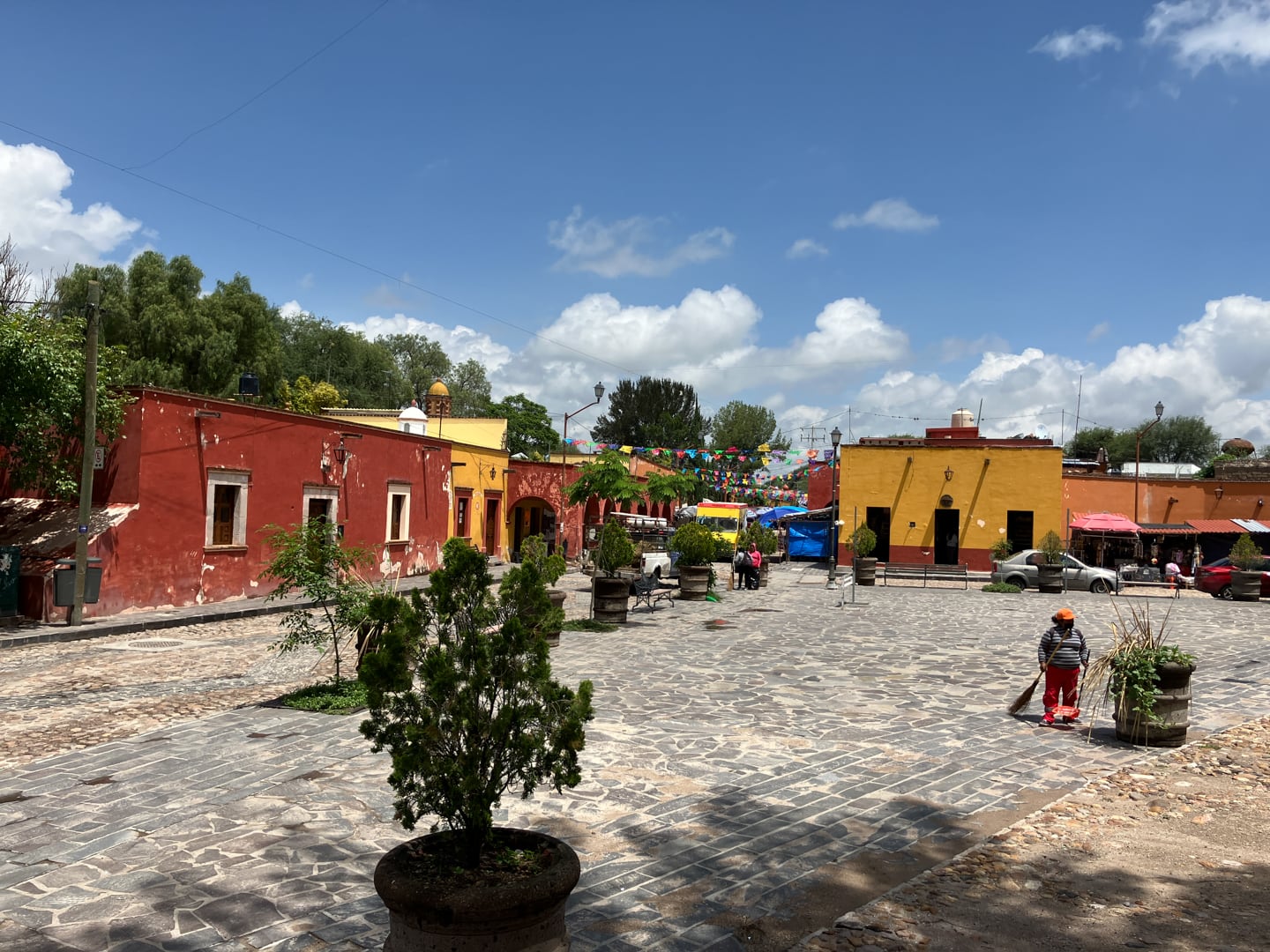
There’s not much else around town, so if you’re staying in the center of San Miguel de Allende, don’t have your own transport, and don’t have plans to head to Dolores Hidalgo, then a day trip to Santuario de Atotonilco might not be worth it to you.
For our purposes, it turned out to be a nice little outing. And, we got some of the best Gorditas we’ve ever had out of the visit (just across the street), so we were very happy with the outcome.
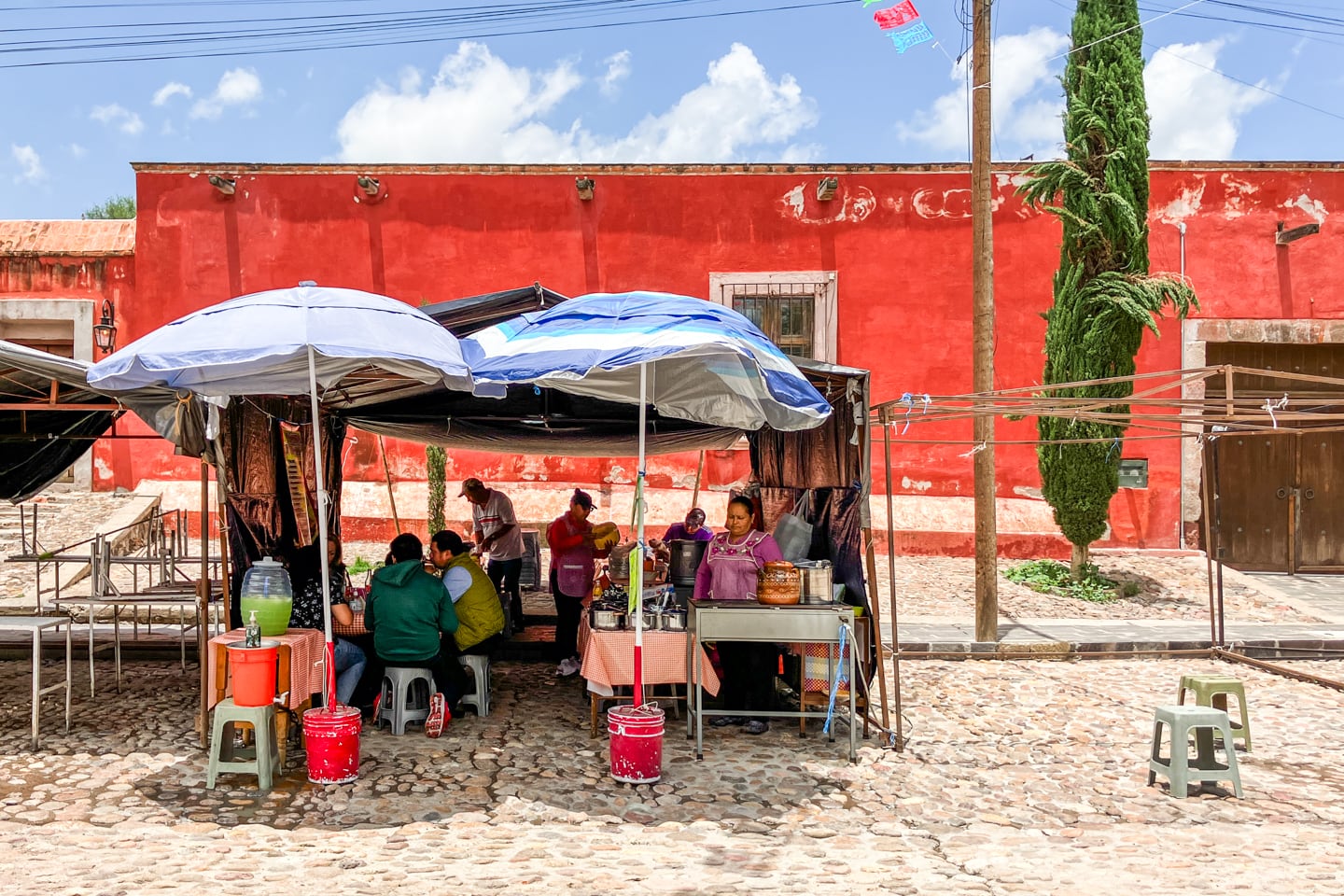
When to Visit Atotonilco
Weatherwise, there really isn’t a bad time to visit. It rarely gets oppressively hot in San Miguel and we visited in the middle of rainy season with no problems.
With regards to crowds, your best bet is to visit midweek and as soon after opening as possible. If you’re trying to avoid the place being packed with people, It’s always a good idea to avoid busy holiday times in Mexico, especially religious festivals.
Final Thoughts
While the Sanctuary of Atotonilco might not make our top 10 favorite historic sites in Mexico, if you’ve got some time in San Miguel de Allende (and especially if you plan to visit the Pueblo Magico Dolores Hidalgo), we think it’s still very much worth the 20-30 minute drive or bus ride out of town.
Visiting Atotonilco also offers an opportunity to visit a more traditional and “authentic” Mexican town than San Miguel. However, if this is your sole aim, we suggest simply taking a day trip to Dolores Hidalgo and skipping Atotonilco.
If you’re traveling with kids, there isn’t a whole lot in the sanctuary to enthrall and entertain for more than a few minutes. For our two boys, the yummy gorditas and round trip bus ride seemed to be enough to make the outing worthwhile for them.
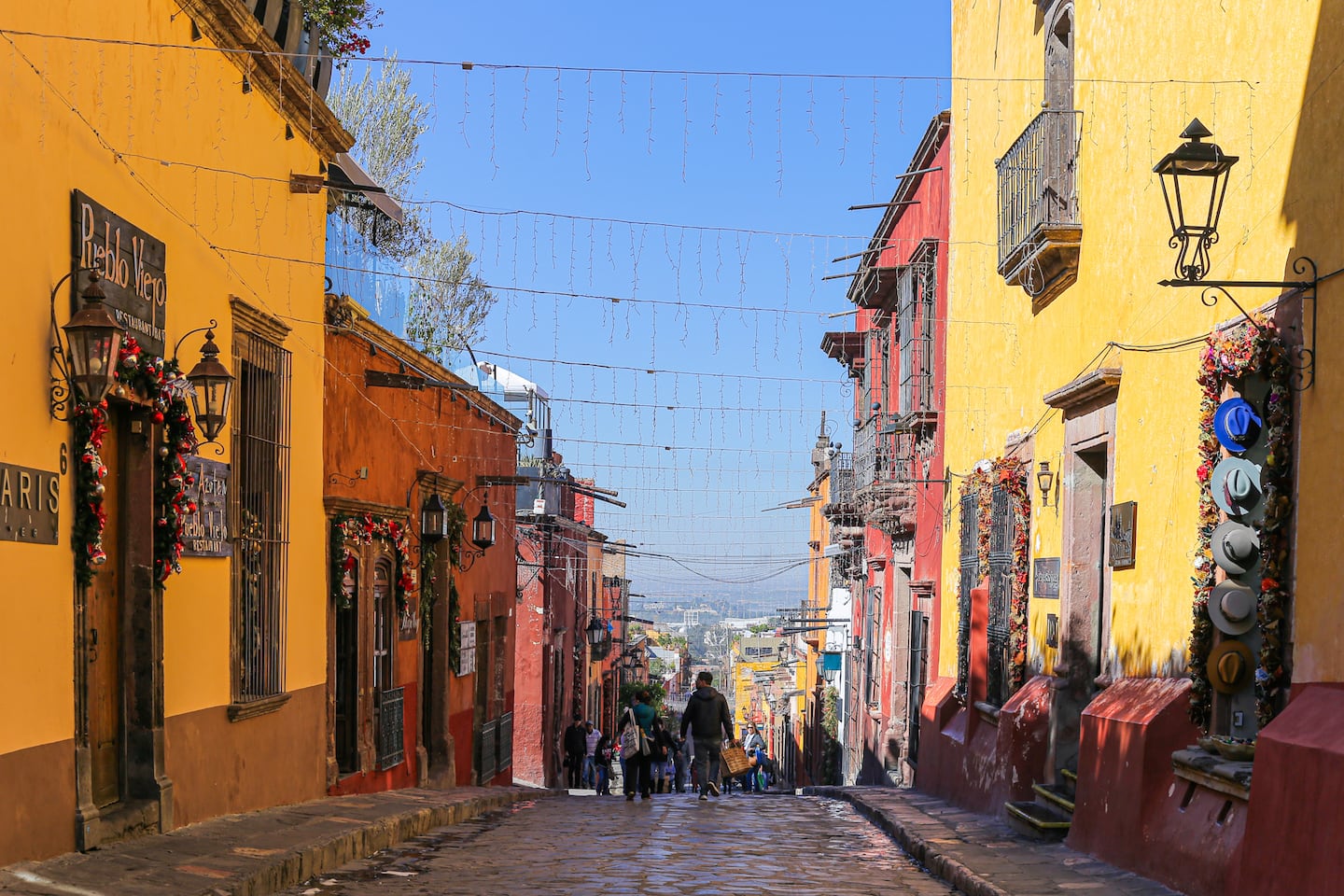
More Reading for Your Mexico Trip
Central Highlands
- 6 Best Ways to Tour Teotihuacan from Mexico City
- Xochimilco Floating Gardens (CDMX): Visitor Guide
- Isla de Janitzio (Michoacan): What to See & How to Visit
- Tzintzuntzan Pyramids & Pueblo Magico (Michoacan)
- Lava Church of Old San Juan Parangaricutiro (Michoacan)
Pacific Coast